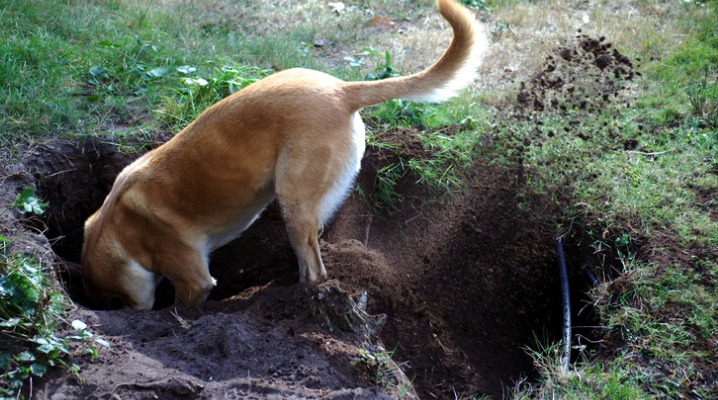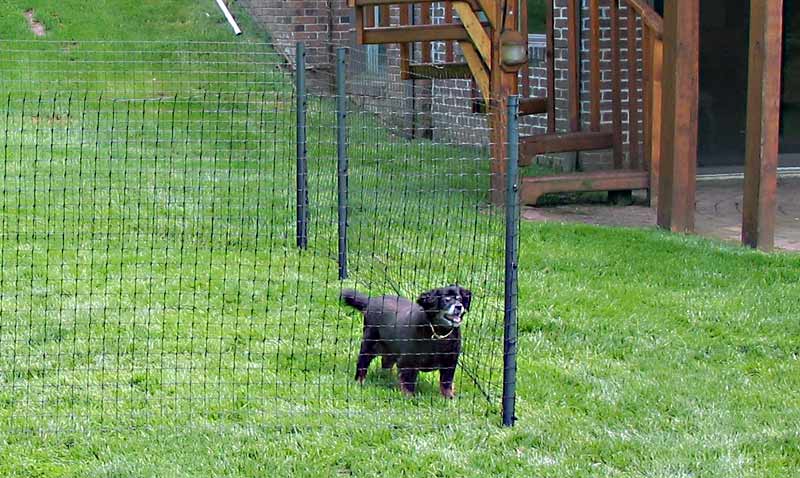Most people realize that socializing dogs is easier when they are still a puppy. Dogs are very responsive and spending a lot of time learning from their environment between 2 and 10 weeks of age, so socializing your dog earlier is much easier. Following 12 weeks, it can be tough to get a puppy to acknowledge anything new. It’s not conceivable to socialize an aggressive dog legitimately inside this window. Possibly your dog was exceptionally debilitated as a puppy, and your vet suggested keeping him inside and far from different dogs. Or then again, maybe you protected it at a more seasoned age and it just never got a decent chance to socialize some time recently. Whatever the reason your dog wasn’t socializing with dogs and cats, it doesn’t mean it must be consigned to an existence without dog friends or free to play with others. Underneath, you will discover a few hints on the most proficient methods to socialize your dog with strangers.
Connect with a verified veterinarian in minutes. Licensed vets are available 24/7 to answer your questions. No need to worry about your furry family member.
Regardless of whether you have a rescue dog that is figuring out how to confide in people or another puppy, you need to ensure you are mingling him. Since it can be difficult to know how to do that, here are ten tips to kick you off. It’s essential to never push your dog into a circumstance that is making it afraid; this will do the dog more harm than good. Rather, ensure every single new experience are certain and on the off chance that you require help, visit a guaranteed proficient dog trainer.
1. Open your puppy to completely new persons and experiences while still between the ages of 2 to 10 weeks
When puppies are between the age of 2 to 10 weeks, they are the most tolerating of new experiences. Amid this time you could open your puppy to the same number of new (but risk-free) experiences as could be expected under the circumstances, for example, different pets and animals, people of different ages and sizes, vehicles, the outside, and so on. A short list of things your puppy ought to be presented to incorporates: New individuals of various sexual orientations, height and ages: Have a willing individual pet and positively manipulate the puppy.
Additionally, ensure your puppy is introduced to individuals wearing caps, coats, and boots
Youngsters: If you don’t have kids in your home, convey your puppy to a recreation center where youngsters are playing (ensuring it’s alright to convey a dog to the park.) Let your puppy watch and listen to the children playing.
Different creatures/pets: On the off chance that you don’t have another pet, ask a companion with a cat or other pet if you can open your puppy to their pets. Try not to have the puppy play with the pet however rather have the puppy sit serenely close by as the pet continues ahead.
Individuals doing various exercises: Ensure your puppy is subject to individuals utilizing roller blades, wheelchair and so on.
Different surfaces to walk and sit: Give your puppy a chance to walk and run in mud, cover, tile, rock, spans, soil, wood floors and metallic and slippery surfaces (like a veterinarian’s examination table).
Noise: A few puppies can wind up plainly scared of vacuums, shouting, hair dryers, ringers or loud fans if they are not subject to them. Playing music, keeping a radio or TV on in the house or where your puppy sleeps may assist with how it learns to accept noise as part of the environment it will live within.
Odd things: A few puppies might panic of strange things like plastic packs, umbrellas, raincoats, or child strollers on the off chance that they are not subject to them while still young.
Weather: Depending on where you live, your puppy should be experiencing difference weather conditions while playing outside. This covers everything from a nice sunny day to windy, stormy, cloudy days, thunderstorms (the sound of thunder can be quite frightening to a dog if it has not experienced it frequently during its lifetime), snow, ice and rain. Your dog should be accustomed to all possible weather conditions so that you can take him outdoors at any time.
Movement: Motion sickness doesn’t just affect adults. If you can introduce your puppy to car rides early enough, your companion may become a perfect riding partner who’ll hop into the car and either sit up throughout the ride or be so comfortable to fall asleep as soon as you pull out of the driveway.
2. Parks
Parks are awesome thanks to the diverse people your dog can meet. On the off chance that your dog is shy, go mid-week when kids are in school, and fewer people will be at the park. Once more, take a lot of toys and treats. Look for indications of stress and attempt to leave before your dog has had “enough” or gets frightened.

Review symptoms, medications & behavior to keep your pets healthy with a Vet Online in just minutes.
Ask a Vet Live Now3. Schools or After School Programs
Getting a puppy used to youngsters can be extremely testing on the off chance that you don’t have kids– where do you encounter them? Ask your nearby school or after school program if you can bring your puppy into a classroom to discuss dog preparing, dealing with a puppy, and also in a bid to socialize your dog with strangers. This is a one of a kind method for getting your dog used to a lot of children.
Remember that most youngsters may not have access to a puppy of their own so in a way, you can help socialize them, too. The downside is that young children may play rough with a relatively harmless puppy so if you do choose to introduce your puppy to a bunch of children, it wouldn’t hurt to go over some grounds rules such as no tugging of the ears and so on. That way the experience is positive for everyone.
4. New Walking Spots
It’s anything but difficult to take your dog for a stroll around your neighborhood every single day. Rather, set aside the opportunity to drive your dog someplace and walk him there – another area, another city obstruct, another park, in order to socialize your dog with strangers. Doesn’t make a difference where, what does make a difference are the distinctive notices, sights, and people he will meet. Same goes for pet stores; the nearby one might be advantageous; however, you should take him to the ones in another town as well.
Your dog will find a new walking site or any new location worthy of exploration. After all, there are going to be many new sights and scents to check out. This is when you will want to have a leash with you to ensure that your puppy doesn’t get so caught up and distracted with the ‘newness’ of the area that he or she wanders off or gets lost.
5. Overnight stays
Take your dog on overnight stays. Regardless of whether you have no outings arranged now, doesn’t mean you won’t later. Practice by setting off to an adjacent lodging for a night or an end of the week. You don’t need to spend a lot to socialize dogs and cats, you simply require them to be used to the people, the lift, commotions originating from other visitor rooms, and so forth.
6. Walk your dog every day — and acquaint them with different dogs
Dog strolls are awesome open doors for you to socialize a timid dog and potentially meet different dogs and people, and also hone appropriate conduct when all over the place. This aspect is a prominent way to socialize your dog with other dogs.
Why? Indeed, for one reason, since you’re will undoubtedly keep running into more social circumstances when you’re out on a stroll than when you’re at home. Be that as it may, strolls are additionally superb for mingling dogs since they’ll have less repressed vitality because of the activity and ought to be calm and more resigned. Keep in mind not to pull back on the rope or holler at your dog on the off chance that they bark or misbehave, because this builds their energy level, influences the experience to negative, and influences them to connect that feeling with different dogs.
7. Safely expose your dog to various social exercises
Try not to rush things, yet if you can acquaint your dog with one new movement in seven days, it will go far towards helping to socialize your dog with other dogs. Utilizing a chain helps in such manner, as does making your dog an observer at first. For instance, rather than simply taking your unsocialized dog into a dog park and hoping for the best, expose them gradually by strolling them around the outside of the fence and giving them a chance to see the dogs play and have a ton of fun.
The same thing applies to the dog-friendly businesses in your community. You’ll want to slowly introduce your puppy to them by driving to the specific store and parking in their parking lot. Walking your dog around that area will help to familiarize him with the location and then walk to the store. Eventually, you will be able to take your dog inside with you.
The idea is to slowly introduce your dog as there are so many things for your puppy to see and get used to
8. Mix It Up
Open your dog to a variety of people, from men and ladies to kids, so he can get accustomed to people (who are significantly greater). The thought is that if your dog just ever hangs out with one individual, he may become careful about anybody that isn’t that individual, so it’s urgent to broaden your dog’s Rolodex and set aside a few minutes for a meet and welcomes. The valuable rundown of mingling tips: Try not to reward or acclaim your dog for being frightened of people – this supports restless conduct. Backpedal to rudiments: A dog who is certain with their training and routine makes for a balanced pooch.
9. Community Events
Be watchful for any occasions that occur in your group where dogs are welcome. It does not necessarily need to be a pet occasion, a ton of “craftsmanship in the parks,” philanthropy strolls, and even some late spring motion picture occasions enable dogs to come. These are fantastic occasions to socialize an aggressive dog on the off chance that they are quite balanced and simply require more social time. These are most likely not suitable for a dog with nervousness, as you might be a disturbance at the occasion. These types of venues offer the opportunity to spend quality time with your puppy and possibly expand your circle of friends. Any type of social event can bring you in contact with other dog owners who may become a source of information or support.
10. Introduce your dog to your friend’s dog
Stroll up to your friends, with your dog beside you (on his rope). Try not to enable your dogs to get excessively close. Stand with the goal that you and your friend are between them. On the off chance that your dog snarls, pivot and leave. Make your dog sit with his back to the next dog until the point when he quiets down. When he calms down, compensate him with a quiet “good boy.” Depending on the dog, this procedure may be rehashed for a couple of days to half a month. Keep the dogs on chains and isolated from each other amid this procedure. Ensure that your companion keeps his dog on its rope and stands around 10 feet from you at the outset and after any forceful responses. Be willing to increase the separation if necessary. Introductions can take time.
In conclusion
Look for help if your dog’s conduct does not improve. In case your dog does not improve with socialization practices, look for the assistance of an animal behaviorist or confirmed proficient dog trainer. Approach your veterinarian for a referral if you don’t know where to look. Socializing a dog makes it a better pet to be around for you and others. Training your pet to be a guard dog, for example, still requires socialization if you ever plan to get close to it. Plus, a well-socialized dog will live a longer, healthier and happier life. So in the long run, socialization is good for both you and your pet.
Consider aggregate training or one-on-one training for your dog. Continuous submission training is an awesome method to get your dog to carry on with different animals and people. Taking your dog to bunch of dutifulness classes can likewise acquaint him with new animals and people, yet many dog coaches offer one-on-one sessions also. Now it is up to you!
Connect with a verified veterinarian in minutes. Licensed vets are available 24/7 to answer your questions. No need to worry about your furry family member.

Kyoko
Kyoko is from a family of 3 and moved to New York with her parents and siblings when she was 13. Kyoko is fond of spending a great amount of time with pets, specifically her beagle Luna and cat Missy. Her boyfriend often complains that she spends too much time giving attention to their animals. Kyoko has written dozens of articles concerning pets and is aiming at owning a pet shop one day!
Review symptoms, medications & behavior to keep your pets healthy with a Vet Online in just minutes.
Ask a Vet Live Now



